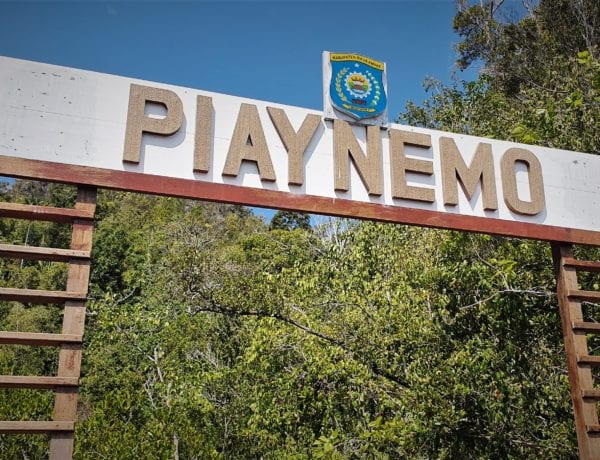Raja Ampat is one of the best snorkeling destinations in the world with pristine reefs and great marine biodiversity. Raja Ampat is an archipelago of 4 main islands: Waigeo, Batanta, Salawati and Misool and over 1000 smaller islands. No matter where you go, you will be able to see an amazing underwater paradise.
Check tide times to get better snorkeling during the low tide. You can get much closer to the reef due to shallow water.
DIVETIP
Raja Ampat snorkeling experience:
I started the Raja Ampat experience with sessions at our house reef and some local spots. I was amazed! In these shallow waters, where sunlight brightens healthy colored corals, I discovered a world unfolding in front of me like a ultra HD TV documentary.
House Reefs – Our island resort had two house reefs. The main one was in front of the hotel with direct access from de jetty and a smaller one at 10 minutes away from our bungalow. The reef was fantastic with a beautiful garden of soft corals, hard corals and sea sponges. These amazing corals were hosting many rich coloured fishes in various shapes and sizes. I saw butterflyfish, angelfish, boxfish, pufferfish, parrotfish, surgeonfish, triggerfish and my favorite one moorish idol. I also enjoyed watching a clown fishes and their anemones. Here in Raja Ampat, at every low tide, I had the opportunity to have a close up on clownfish and their home. It was very funny because every time I got close to anemonas the little clownfish tried to attack me.
When it comes to house reef I can’t forget Carlos, a huge barracuda who lived under the main jetty. Carlos was the laziest and fattest barracuda that I have ever seen.
Here, I encountered for the first time blacktip reef sharks. At the beginning I was a little scared of them, but then after a few encounters I got used to them. Every time I tried to stay still so I could analyze them as good as possible.
Spotting an octopus can be really hard because most of the time they stay hidden in the corals but I was lucky enough to notice a couple during sunset time. I was fascinated by their ability to camouflage themselves and to take the shape and color of the reef.
Night snorkeling – at the beginning, swimming in the dark made me nervous. After a few minutes I realized that was a good opportunity to encounter marine life that was hard to see during the day. I experienced a different marine environment, the reef is so calm, the fishes try to find the best cover or search for their catch. The highlights of this session were walking shark, scorpion fish, stone fish, morays, lobsters and giant crabs.
If you want to experience luxurious and pristine reefs Raja Ampat has amazing corals with no signs of bleaching.
Check my snorkeling experience:
When to visit:
Weather and underwater conditions are good all year around but the best months for snorkeling are October to April. Even in high season visibility is not excellent as Raja Ampat waters are rich in plankton and other nutrients. The ocean is warm year-round with an average of 28°C / 83°F.
What you`ll see:
Beautiful soft corals and hard corals, Epaulette Shark, Blacktip Shark, Whitetip Shark, Barracudas, Stingray, Octopus, Stonefish, Scorpionfish, Lobsters, Batfish, Butterflyfish, Angelfish, Clown Triggerfish, Titan Triggerfish, Clownfish, Sweetlips












No Comments